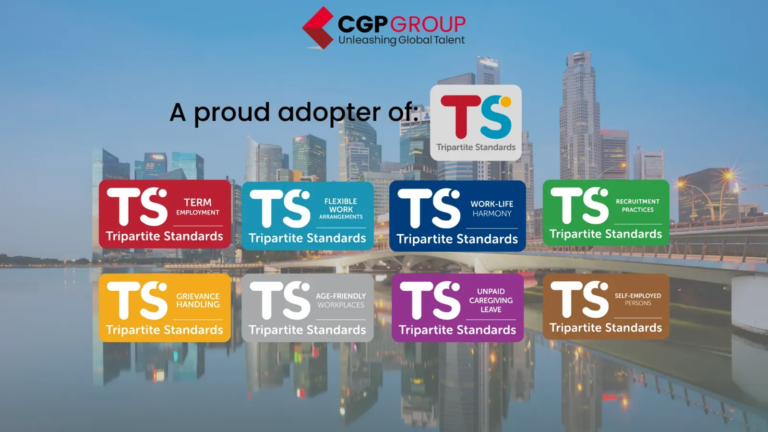Think of this: Jenny is a software developer with a suitable skill set and knowledge. Your organisation interviewed to close the tech job opening and selected her for the job role. Unfortunately, though she possesses all the tech knowledge and experience, she could not qualify for the job fit assessment.
Assessment findings: Jenny isn’t assertive and doesn’t possess strong communication skills. Moreover, she isn’t comfortable communicating with the clients.
What could happen next? Why didn’t things work well despite Jenny having all the skills and knowledge? Presumably, you didn’t measure for job fit when hiring, or you were clueless about how to hire for job fit over culture fit.
Let’s first begin by understanding both the concepts – job fit and culture fit.
What is a job fit?
A fine line differentiates hiring for a job fit from hiring a talented employee. Being a holistic hiring concept, job fit allows employers to understand better what the candidate needs to fit into the position. It intends to determine whether they’ll fit in the organisation’s environment, what a good job fit looks like, and its assessment. The term combines soft skills, hard skills, values, and cultural fit.
| | As LinkedIn defines, establishing job fit helps identify and place individuals in positions where they are likely to perform at their full potential. |
What is a culture fit?
Business culture comprises values and beliefs that define the organisation’s vision and mission. In literal terms, culture fit matches the candidates with business culture. It is about hiring a candidate more likely to adapt to the company’s culture and get along with your team.
Why does job fit matter?
You need to be confident about the candidate before hiring them. And job fit is an add-on to the basic job hiring process. It also indicates candidates’ productivity & engagement levels and how satisfied they will be in their new role. Missing out on including job fit in the hiring process will make employees dissatisfied with their job and seek employment elsewhere.
As a recruiter or hiring manager, you need to know they have skills and understand what keeps them motivated. For instance, an engineer may have all the required skills & knowledge to justify the role. However, a difference between their and the company’s values can ultimately result in overall job satisfaction.
In a recent survey of 2,500 millennial and Generation Z applicants, 72% of respondents were surprised or regretted accepting a role because the position or company was very different from what they believed it would be.
Thus, it is important for both employers and employees to evaluate the role and especially for employees to understand how the organization will or won’t align with their values, potential, and future goals.
Here are some tips for evaluating and hiring for job fit.
How to hire for job fit?
Obtain a Thorough Understanding of the Role
As an employer, to best assess job fit, understand precisely what you expect from the candidate. First, look at the role’s content, job responsibilities, and skills the candidate must possess. Then, once you analyse the position, you’ll be able to figure out which profiles could be considered.
For candidates, it is important to study the job description and organization thoroughly. Researching well about the role, company & culture can help candidates get more clarity to match expectations with their current skill sets.
Perform Pre-employment Testing
Rather than employing a candidate based on the factors associated with the job, perform pre-employment testing. Here’s the job fit checklist for you to consider.
-
Technical skills
-
Soft skills
-
Cultural fit
-
Values & beliefs
-
Experience & Education
Apart from analysing candidates based on these factors, you can assess candidates’ behaviour by presenting them with scenarios. Give them options and see what they choose to sail through a particular situation.
Past Webinar: Reduce Risk & Identify S.T.A.R Candidates Using Behavioural Based Interview (BBI) Techniques
Develop a Streamlined Interview Process
Bring the information you obtained in the first phase and develop a unique interview process. Nowadays, interviews aren’t just restricted to asking typical questions but also embrace behavioural questions. Such questions aim to know the work environment within which the candidate prefers working. You can also have a work assignment and see how the candidate would perform the job in real-time.
Identify What Keeps Candidates Motivated
There is always a factor that motivates candidates to love their job while keeping boredom away. While one may prefer a healthy work environment, others may consider a salary package as motivation. It is up to you to identify whether or not the candidate will eventually be happy in the job.
Make a Far-sighted Move
Focus on the long-term perspective and ask yourself whether the candidate would stay with your organisation in the long run. Additionally, keep a check on the internal mobility programs to ensure their growth with the organisation to retain them for a long.
Align Job Fit with Organisational Fit
When you hire a candidate, you hire for both— job fit & organisational fit. Admittedly, your hiring process must assess both to reach the best hiring decision. However, most candidates prefer quitting their jobs if they find either of the factors missing.
Make it a Two-way Process
Unarguable, as an employer, you are entitled to ask questions during the interview process. But making it a two-way process will allow candidates to speak and explore more about the duties and responsibilities.
Answering candidates’ questions about the environment, culture, and communication practices can help them better assess and align their interests, values, and future goals.
Benefits of Hiring for Job Fit
According to a report by IDC and Workday, the top 3 countries with the highest expected employee turnover rate are Singapore, Malaysia, and Australia. The survey mentions that 46% of employees in Singapore are likely to leave their jobs within a year – the main reasons being work-life balance, career prospects, and better compensation.
While there is a majority of reasons leading to these findings, not hiring for job fit is quite dominant. As a result, employees leave their jobs due to a lack of motivation, unhealthy relationships with managers, and burnout. Even so, hiring managers can avoid such situations by analysing employee job fit.
We are listing down the benefits of hiring for job fit.
-
Decreases employee turnover
-
Improves retention
-
Sources better candidates
-
Improves candidates’ performance
-
Leads to better team collaboration
Final Thoughts
Gone are the days when employers hired candidates based on their resumes because candidates overstate the facts as well as when a mere interview decided a candidate’s employment fate. Instead, if you hire for job fit over culture fit, you’ll be endowed with a more productive, highly motivated workforce with high adaptability rates.
Are you looking for suitable candidates for your organisation? CGP Singapore can be your recruitment partner. We can introduce you to our pool of qualified candidates and ease your recruitment journey.
Contact our team to learn more about our services for job hiring in Singapore. Till then, Happy Working!
FAQs
1. What is the risk of hiring based on the cultural fit?
Hiring for cultural fit can cause serious issues for companies. First, if you try to build a homogenous team of culturally fit people, you are reinforcing biases and categorising them based on past experiences. Secondly, every candidate cannot fit into one model, and imposing the same can make them quit. Thirdly, hiring for cultural fit is more based on superficial traits than core competencies.
2. How do you check the candidate on culture fit?
To check the candidate on culture fit, you need to address the following factors:
-
Know your company culture
-
Match the candidate’s preference with your company’s culture
-
Ask cultural fit questions
-
Make room for candidates for self-assessment
-
Keep biases at bay
-
Analyse decisions
3. Should you hire for cultural fit?
Hiring employees that match your company culture is a good sign and leads to an improved retention rate and increased expertise and capabilities of the employees. However, this alone shouldn’t be the metric used for recruiting candidates, and you must also consider hiring for job fit to place better employees.








